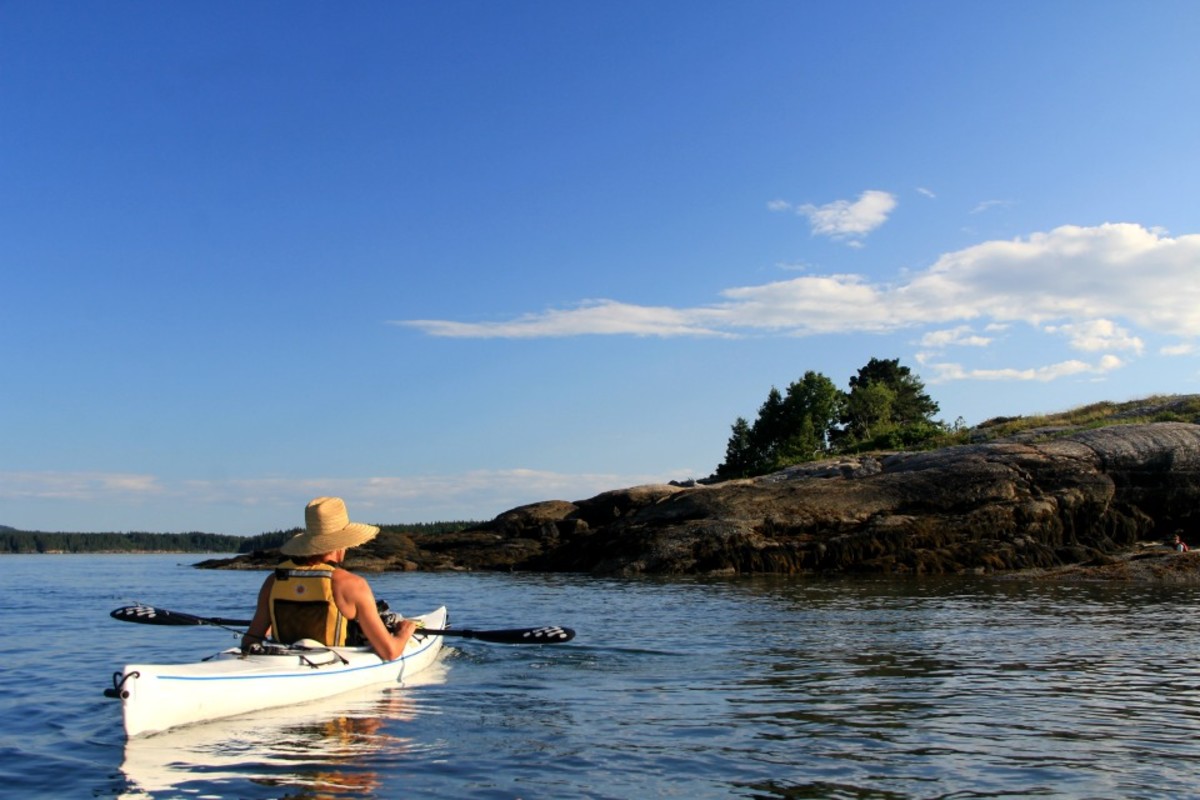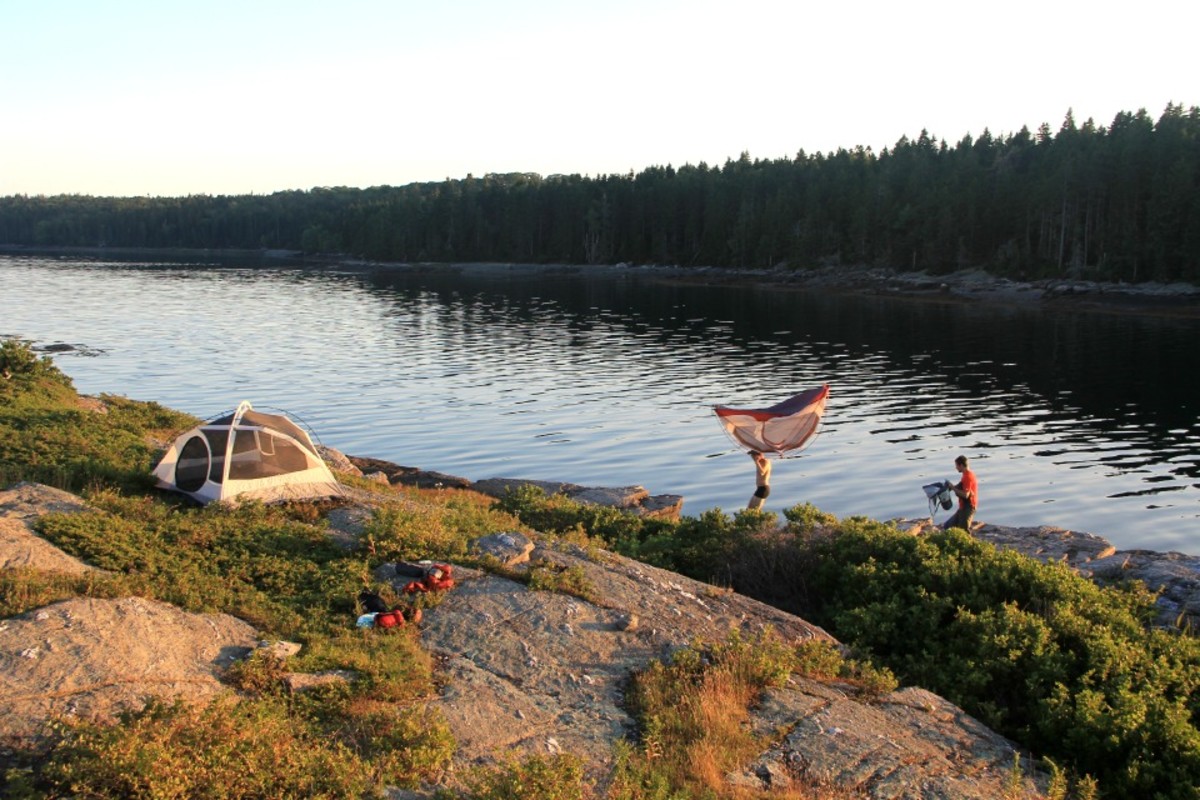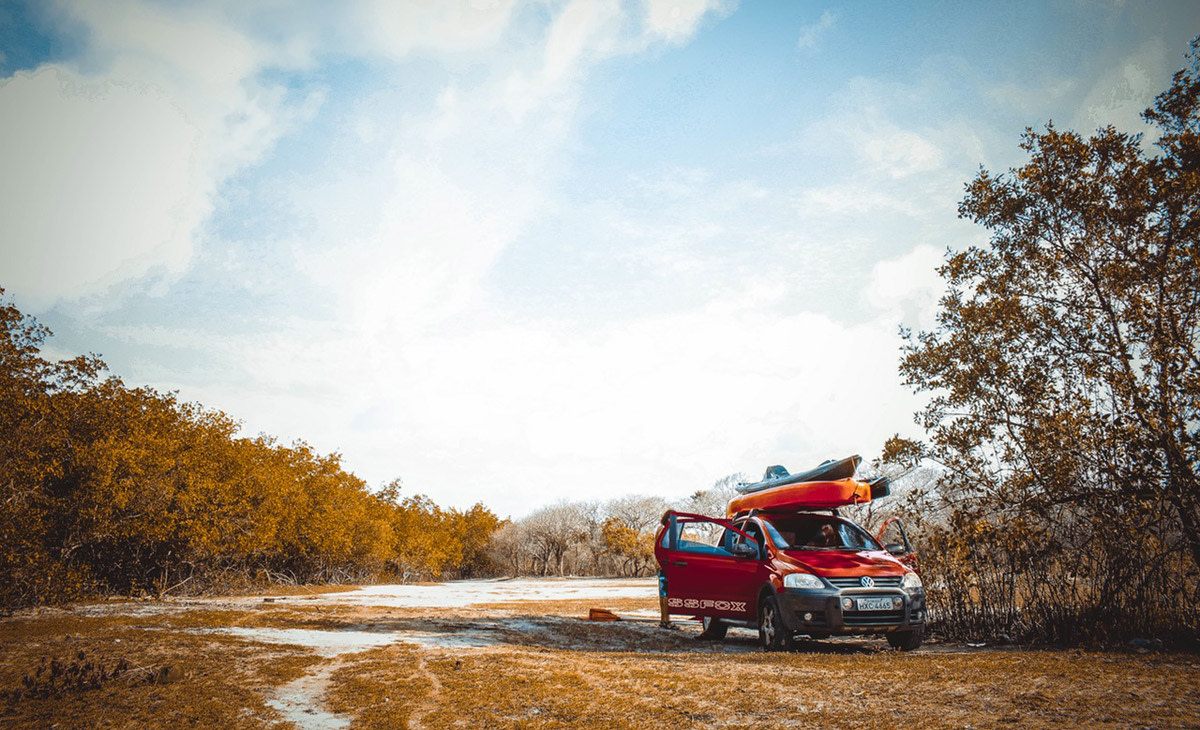I didn’t think it was possible, but camping had started to become, well, a little boring.
Don’t get me wrong—I don’t think I could ever get tired of cooking on a camp stove, staring off into a beautiful forest, nestling into my sleeping bag with the smell of smoke still lingering in my hair.
It was the routine of the whole thing that was starting to get to me: Unload tent, set up tent, blow up air mattress, dirty the pots, clean the pots, walk the trash to the trash can, build the fire, roast the marshmallow… repeat. What was it that I didn’t know then that I know now? It wasn’t camping that had gotten stale—it was just how I was going about doing it.
Enter the kayak. Typically used for day trips, in my experience, I was now loading up the watertight hatch with my sleeping bag and a change of clothing. Over the next few hours, I’d paddle my way out to sea until my arms burned. My friends would tow a bag of lobsters behind us.

We’d find an island, lug our boats above the high-tide line, toss a few crustaceans in a pot of sea water and fall asleep under the stars. Just the five of us alone on the ocean. Simple, classic and, suddenly, anything but boring.
So if you’re looking for a change of pace, here’s how to try a new mode of camping: straight out of your kayak.
What You’ll Need
Kayak camping is not all that different from backpacking, and you’ll be using almost all the same equipment—tent, sleeping pads, sleeping bag, camp stove, pots, headlamp, fire starters, and emergency equipment—only in this case, you don’t need to carry it all on your back and up a mountain trail.
Being prepared
Many kayak rental companies don’t allow you to take their boats overnight camping—and for good reason.
It can be risky, so make sure you’re fully prepared. Don’t leave without flares, life jackets, an extra paddle, a 25-foot tow-rope, a first-aid kit, and fire starters.
At the very least, make sure you can use a compass and map and know basic ocean navigation. Never paddle into the ocean without ocean-kayaking skills, and stay home if the forecast calls for fog or storms.
Keeping It Dry
There’s only one law to follow when kayak camping: Murphy’s Law. If something can get wet, it will get wet. Don’t rely on the waterproof hatch of your boat, even if it’s never leaked before.
Invest in some waterproof dry bags and stash anything that needs to stay dry inside. Invest in a waterproof case for cameras and phones, and keep all down products sealed up and protected from the water.

Packing It In
There’s probably less room in your dry storage than in your 60-liter backpack, so you’ll need to learn how to squeeze and stuff into every nook and cranny of your boat.
Keep wrapped or waterproof items loose so you can fill in gaps between bags. Keep anything that can get wet (water bottles, canned food, tent poles) in the cockpit of your boat if it doesn’t fit anywhere else, but always make sure your fire-starting equipment, first-aid kit, sleeping bags, and clothing make it into the dry storage.
If you’re bringing dry wood along, stash it in a few garbage bags before latching it to the top of your boat or stuffing it in a hatch. Try to divide up essentials between your kayaking buddies.
Accessorizing
If you’re kayaking on rough waters or on the ocean, make sure you invest in a spray skirt; it’ll keep your legs dry and keep you warmer. Pack along a waterproof jacket and possibly a pair of gloves if you tend to get blisters from the paddle.
Taking It Slow
If you have items latched to the deck of your boat or dragging along behind, wind and water resistance will slow you down. The added weight in the boat will actually make it tougher to paddle, so budget extra time.
Subbing In Saltwater
Here’s the cool part about ocean-island camping: You can sub in saltwater for many of your freshwater needs, cutting back on the amount of water you need to bring with you.
Clean your camp dishes with salt water and cook seafood with it, too. (You can rewash pots back on the mainland.) Just make sure you have enough of the fresh stuff to cook other foods and stay hydrated; always tote along a filter just in case.

Setting up Camp
Know exactly where you’re going ahead of time. If you’re island camping, you’ll have to call ahead to make sure you can build a fire and get a permit.
Make sure you pull your boats up on land well above the high-tide line so they don’t float away at night, and never start a fire above that same line. Pack out everything you bring in (yep, even your poop—bring some Ziplocs).
from Men's Journal https://ift.tt/2YAG6QB


0 comments